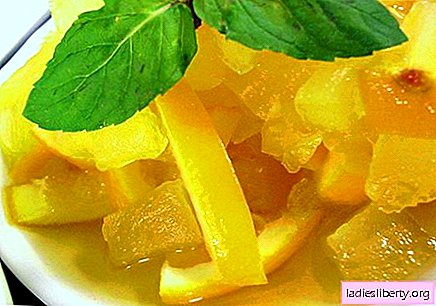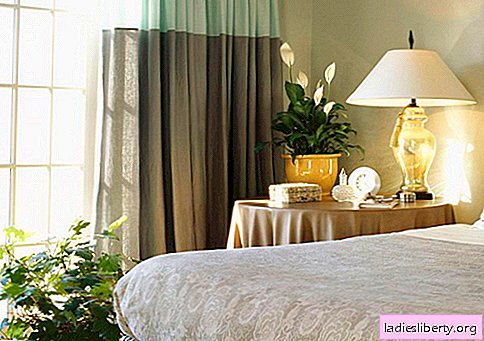
Blackcurrant today does not surprise anyone, berry bushes can be found on every site of any summer resident.
The beneficial properties of fruits have long been studied; they have been actively used in home and official medicine since ancient times.
But for some reason, due attention was not paid to currant leaves, which are no less than berries saturated with useful substances and are able to treat many diseases.
What substances give currant leaves healing properties
Blackcurrant leaves can be called a real storehouse of vitamins and various substances, they are very useful for health. Fragrant leaves are suitable for the treatment of various diseases, bearing their healing properties. Currant leaf is a truly universal plant, which is used not only in the food industry, but also in the distillery, pharmaceutical, canning and even cosmetic industries.
Due to what the medicinal properties appear in currant leaves?
1. Essential oils, thanks to which you can get rid of rheumatic inflammation, skin diseases, strengthen the immune system. Essential oils in cosmetology are very effective.
2. Tannins are able to have anti-inflammatory effects on the body, are a good antiseptic and are suitable for the treatment of colds, infections, gastrointestinal tract infections, tones the body.
3. Antioxidants slow down the aging process in the body, increasing defenses, immunity.
4. Phytoncides have a calming and bactericidal effect. Thanks to these substances, stress is relieved, stress disappears, pressure normalizes, diseases of the lungs and upper respiratory tract are effectively eliminated.
5. Sulfur - a substance that takes an active part in building bone tissue and cartilage, as well as in strengthening nerve cells. Its functions include stabilization of the nervous system, as well as the normalization of blood sugar.
6. Manganese also takes part in the normalization of the nervous system, in addition, it improves brain function, metabolism in the body and prevents the appearance and development of rheumatism, arthrosis, cataracts.
7. In addition to enhancing immunity, silver has anti-inflammatory and antibacterial properties. Thanks to silver, development slows down and the appearance of cancerous tumors is prevented.
8. Copper is involved in most metabolic processes occurring in the body. Thanks to copper, it is possible to prevent diseases such as anemia, rheumatism, atherosclerosis, liver disease, gastrointestinal tract, rickets.
9. Magnesium increases immunity, relieves stress, is an anti-toxic element, relieves inflammation and allergic reactions. It is especially important for heart diseases, disorders of the nervous system and such ailments as constipation and poisoning.
Also, blackcurrant leaves are very rich in vitamin C, which is much more found in them than in berries. The shrub is rich in other vitamins, for example, E, D, A, K group B, PP. In addition to these substances, plant leaves contain zinc, manganese, phosphorus, potassium, boron, fluorine, sodium, cobalt, calcium, iron, organic acids, such as citric, salicylic, tartaric, malic, succinic, flavonoids and pectins. Thanks to the latter, toxins, radionuclides and salts of heavy metals are actively removed from the body, which positively affects health. Thanks to such a composition rich in nature, currant leaves can quite easily compete with any artificially created complex of vitamins.
Currant leaves: medicinal properties of the plant
The healing properties of the plant are manifested in the treatment of a number of diseases:
1. As a vitamin remedy that strengthens the body, currant leaf can treat asthenia, vitamin deficiency, anemia.
2. Its anti-inflammatory properties and antiseptic qualities are relevant in the treatment of diseases of the stomach or intestines. The leaf is able to kill the pathogenic microflora that have settled and spread in the digestive tract.
3. Masks, teas, compresses, baths based on currant leaf are effective for skin diseases.
4. The beneficial properties of the sheets excrete uric acid during the treatment of rheumatism or gout.
5. The diuretic effect positively affects cystitis, urolithiasis, pyelonephritis.
6. Actively combats currant leaf viruses during viral epidemics and colds, strengthens the body's immunity.
7. Fitontsid in the leaves helps to relieve the symptoms of tuberculosis, treat diseases of the upper respiratory tract, tonsillitis and bronchitis.
8. All the beneficial properties of currants are revealed in the treatment of cardiovascular diseases, problems with eyes, and liver.
9. A leaf is also useful for the elderly, especially in the form of tinctures. It strengthens the circulatory system, heart, blood vessels, prevents the development of sclerosis and maintains sobriety of the mind.
The beneficial substances contained in the leaves endowed them with such effects:
• powerful anti-inflammatory effect;
• cleansing and diuretic effect;
• diaphoretic and mild laxative;
• excellent antiseptic and tonic effect.
Blackcurrant leaves: contraindications
Like any medications, blackcurrant leaves have contraindications. Do not use leaves in such cases:
• With thrombophlebitis, since the regular use of drugs based on currant leaves leads to an increase in blood coagulation;
• With increased gastric acidity, a leaf decoction will be contraindicated, it should not be treated with peptic ulcer and inflammation of the duodenum;
• Concentrated leaves of any kind are contraindicated for pregnant women and nursing mothers in order to avoid the appearance of allergic reactions and other side effects;
• If you are hypersensitive and allergic to a berry bush, it is best to consult a doctor first.
How to make tea from blackcurrant leaves. Beverage Recipes
The leaves of blackcurrant, which are part of teas, infusions, decoctions bring many benefits. In such drinks, not only all the properties of the plant are maximally revealed, but also persist for a long time.
To brew leaf tea blackcurrant can be used as a fresh plant, and harvested dry raw materials. To do this, carefully chop the leaves and portion in the amount of 1 tbsp. spoon sprinkled with boiling water. After that, currants can be brewed with 0.5 l of boiling water, and then drink like the most ordinary tea. It will help you recover when you have an upset stomach, intestines, problems with the bladder, kidneys, rheumatism.
An alternative to tea is a decoction, which is suitable for both indoor and outdoor use. To get it, you need 2 tbsp. tablespoons of chopped currant leaves with 200 ml of water in an enameled bowl bring to a boil, and then leave to simmer over low heat for about 15 minutes. When the mixture has cooled, it must be filtered - and the broth is ready. It is suitable for normalizing pressure, improving the work of the cardiovascular system, with viruses and infections. To drink it you need in small sips. In the form of lotions, such a decoction saves from skin diseases, rashes, and excessive fat content.
You can make infusion from currant leaves, but for it you will need other herbs and berries that will complement and strengthen the useful qualities of currants. You can take rowan berries, viburnum, wild rose, dried raspberries, casting lingonberries and strawberries, and others. Depending on the incoming ingredients, each infusion will have its own purpose for eliminating certain ailments.
Sheet baths very useful for the skin, they eliminate problems on it, give it firmness, elasticity, give a healthy shine, reduce sweating and struggle with an unpleasant odor. For one bath, you will need 500 g of dried leaves, they will need to pour 5 liters of boiling water and let them boil for 30 minutes. The finished broth should be infused for 12-15 minutes, and then only it can be poured into the bathroom. The optimal regimen for taking such baths is 1 time in 2 days for 15 minutes. Baths with currants will help restore impaired metabolism, eliminate eye diseases and dermatitis.











